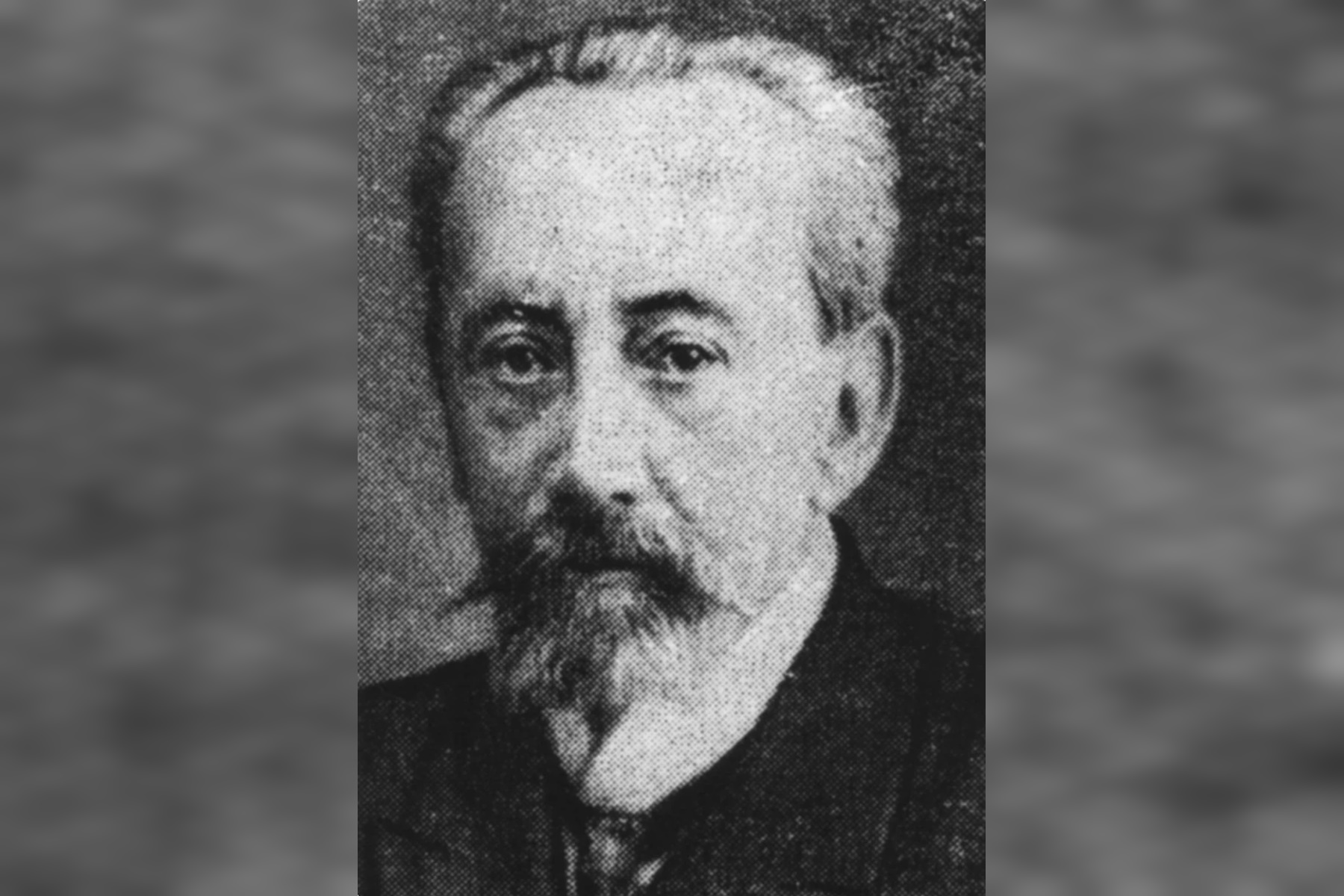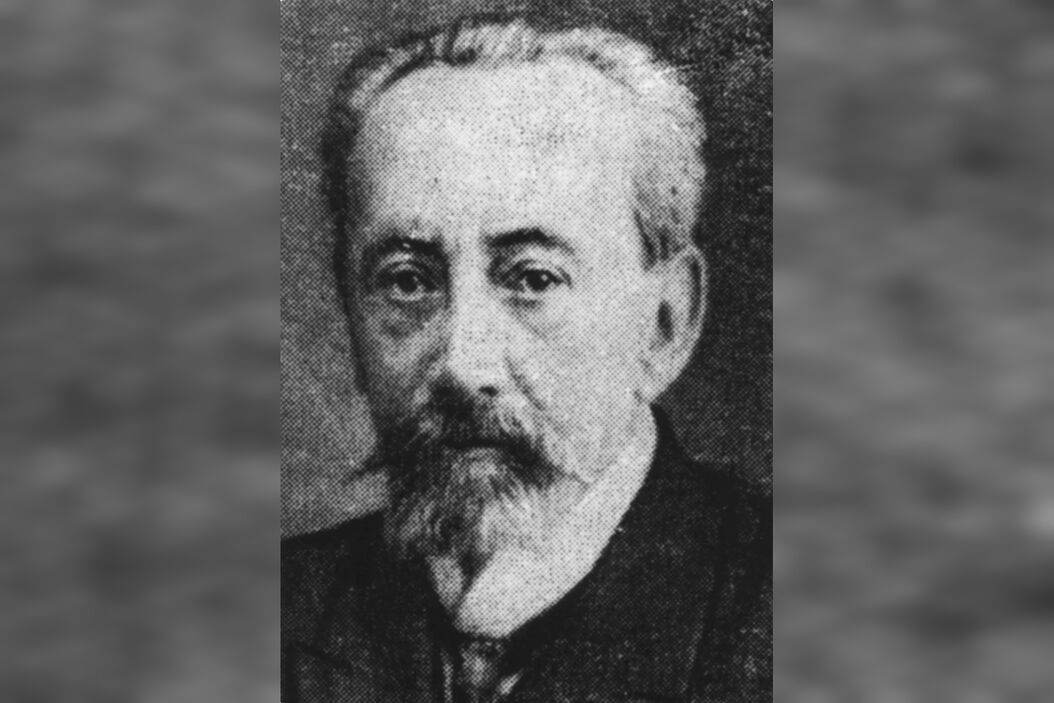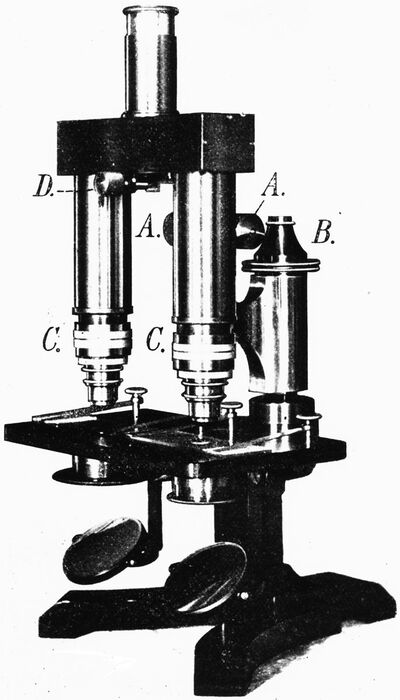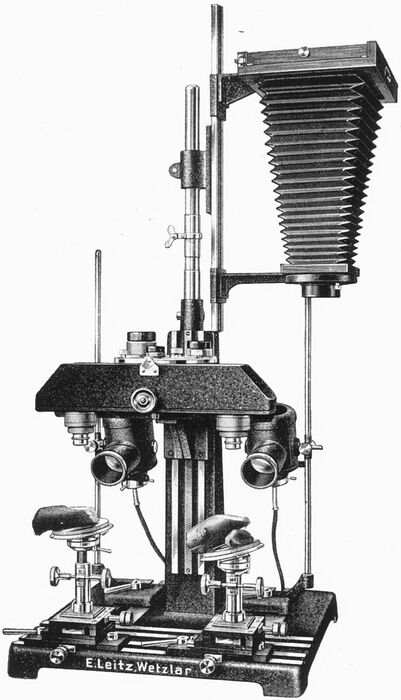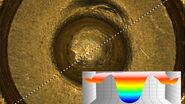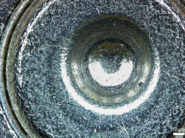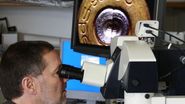The prototype of a comparison device for microscopes
Because the "camera lucida" generated an additional magnification, however, the part images of the two microscopes not only differed in magnification, but also in intensity. In view of these shortcomings, lnostranzeff gave the St. Petersburg University Mechanicus H. Frantzen specifications for making a comparison chamber in 1885. This could be mounted on two adjacent microscopes without an eyepiece.
The rays entering this device from the two microscopes were directed horizontally via two prisms or mirrors to the deflecting prisms in the center of the comparison chamber, which, in turn, reflected the rays coming from the two microscopes in the direction of the eyepiece tube. At the position where the two prisms met in the center of the comparison chamber, a dividing line was formed that enabled perfect split-image comparisons. This comparison chamber was the prototype of a usable comparison device for microscopes.
The first comparison microscope came from Wetzlar
In 1911 the Optical Institute of Wilhelm and Heinrich Seibert in Wetzlar, which was incorporated into the Ernst Leitz company in Wetzlar in 1917, received the first suggestions for building a comparison microscope (Figure 2). Here, the prism combination of the comparison bridge was mounted on a carriage that could be moved to either side (operated with a screw on Seibert’s comparison microscope). This allowed the dividing line between the two part images to be moved far enough for the viewer to see the full image of either of the objects being compared.
This comparison device, the first to form a permanent unit with a microscope with dual illumination and imaging light paths, was sold by Seibert from then on and the Wetzlar company was granted a utility model patent for it.
The comparison microscope conquers the market
Around the same time, the first comparison eyepiece was commercialized by Ernst Leitz in Wetzlar. In 1913 Leitz made the first usable binocular tube based on physical beam splitting ready for series production (Figure 3). In line with the growing significance of direct optical comparison with microscopes, all the main manufacturers of scientific microscopes had adopted comparison eyepieces in their product range by the end of the twenties.
The first comparison observations of fired ammunition
The problems of comparing structures with only one microscope became particularly apparent after laboratories were established for exact forensic bullet identification. The first direct optical comparisons of bullets were made in 1925 by the American Philip O'Gravell at the "Bureau of Forensic Ballistics" in New York. He used an instrument he had designed himself and then wrote a publication describing it (Goddard, Army Ordonance 6 Nr. 33, 1925). Long before this publication appeared in Europe, Otto Mezger, director of the chemical investigation office in Stuttgart, approached the Leitz company in Wetzlar on the same subject. He needed a microscope capable of imaging two cartridge cases or bullets side by side at the same optical magnification. Using two biological microscopes and a mounted comparison bridge, Leitz and Mezger collaborated to perform the first comparison observations of fired ammunition in Europe. The experience gained led Leitz to develop a special instrument, the so-called "Comparison Microscope for Forensic Purposes" (Figure 4) that was launched in 1931 as the first universal instrument of this kind for forensic labs all over the world. Its design principles and optical construction, which included a binocular viewing port pointed the way forward for making direct optical comparisons of trace evidence caused, for instance, by tools or firearms. In the mid sixties, Walter Klein at Ernst Leitz created a new optical design for a comparison tube to combine the images of two microscopes. This comparison tube, which could be mounted onto two Leitz routine or research microscopes of the same type allowed subjective comparisons in split-image and superimposed image mode. The imaging rays from the objectives were directed via two 45° prisms to a central beamsplitter prism. This united the two pencils of rays into one and directed it to the observation tube for a superimposed image display.
Ongoing further development of forensic comparison microscopes
Optical comparison of microscopic and macroscopic specimens is still the method of choice today, as the direct juxtaposition rules out transfer errors. The possibility of direct comparison by viewing a magnified image of two objects in one visual field is extremely valuable for the forensic examiner. Leica Microsystems has therefore continued to develop its comparison microscopes to keep pace with the requirements of modern forensics.
The importance of ergonomics, illumination and software
Nowadays, other factors like ergonomics and illumination play a key role besides optical quality. The motorized z column, the height-adjustable desk and the variable angle of the observation tube are designed for long periods of fatigue-free work, allowing users of all sizes to work in comfort. The universal illumination and rotation device is compatible with all lamps ranging from cold light, area light, cross-section converter, LED spot, mini ring lamp to power LED, enabling the illumination to be rotated 360° around the sample. When the objects are moved, the cone of light is always exactly aligned to the object field. The many accessories and illumination options allow any number of combinations.
Another important aspect of modern forensic microscopes is the software. The Leica Application Suite (LAS) offers users a wide variety of software modules for forensic applications. With the "LAS Multistep" module in combination with the motorized stage, for example, users can record large samples section by section. The individual images are then joined up to the accuracy of a pixel, providing high-resolution views of large samples.
